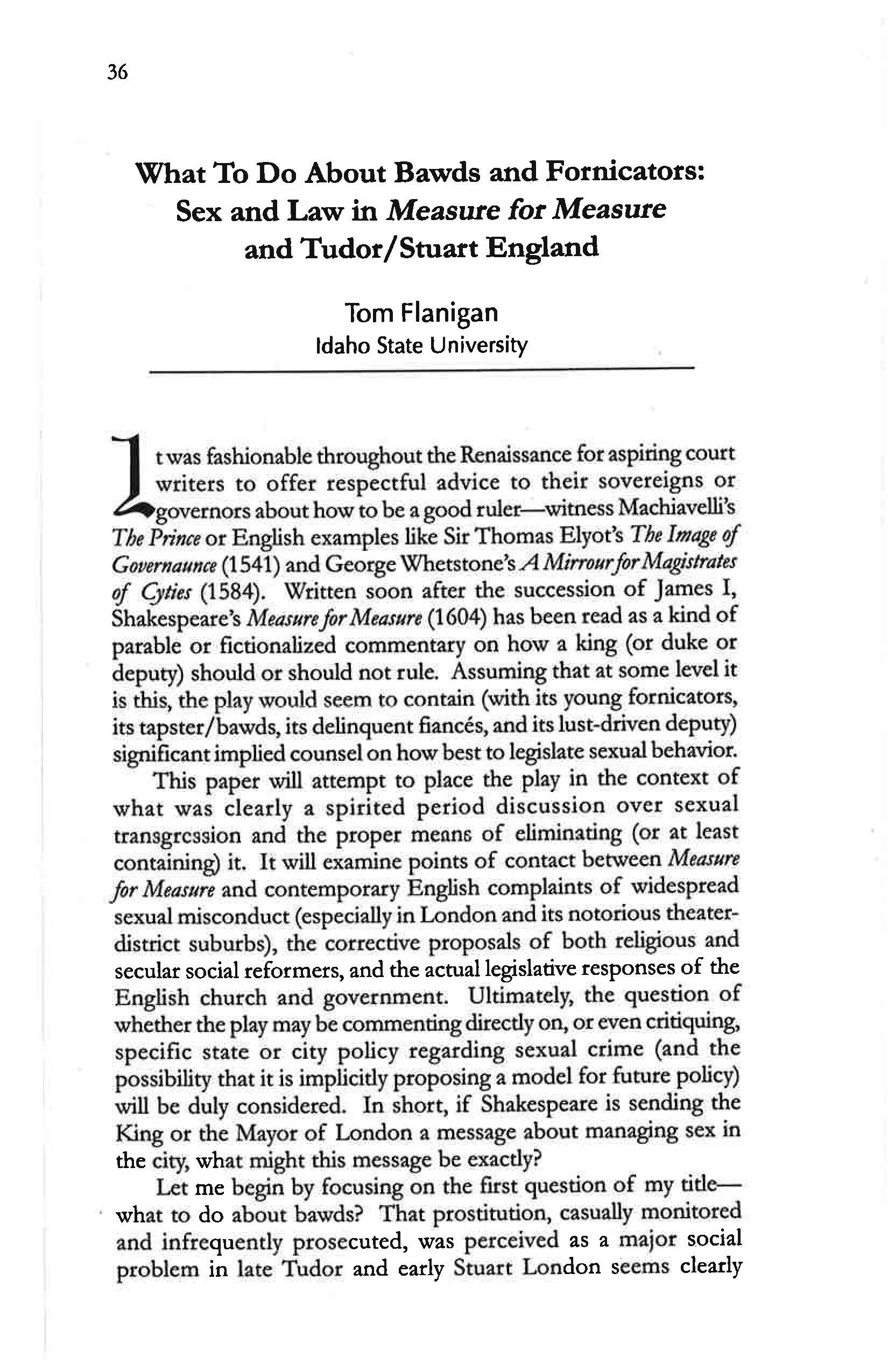What To Do About Bawds and Fornicators: Sex and Law in Measure for Measure and Tudor/Stuart England
Main Article Content
Abstract
It was fashionable throughout the Renaissance for aspiring court writers to offer respectful advice to their sovereigns or governors about how to be a good ruler—witness Machiavelli’s The Prince or English examples like Sir Thomas Elyot’s The Image of Governaunce (1541) and George Whetstone’s A Mirrour of Magistrates of Cyties (1584). Written soon after the succession of James I, Shakespeare’s Measure for Measure (1604) has been read as a kind of parable or fictionalized commentary on how a king (or duke or deputy) should or should not rule. Assuming that at some level it is this, the play would seem to contain (with its young fornicators, its tapster/bawds, its delinquent fiancés, and its lust-driven deputy) significant implied counsel on how best to legislate sexual behavior.
